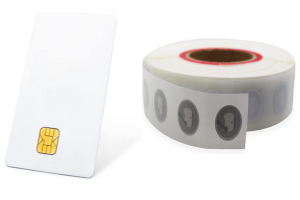Introduction to CPU Card Knowledge Tutorial - Chapter 1: Why Do We Use CPU Cards?
Why do we need to use CPU cards in Chapter 1?
First, let's talk about the insecurity of bank magnetic cards. Those who frequently withdraw money from ATMs must pay attention to the following:
1. When entering a password, it is necessary to prevent ...
Introduction to CPU Card Knowledge Tutorial - Chapter 2: How to Use CPU Cards in Actual Situations?
A simple example of CPU card usage:
Hardware: One PC+one card reader+one CPU card reader communicates with the PC through a serial port, which is a common practice.
Software: A small program that can read and write CPU cards on a PC (usually card r...
Introduction to CPU Card Knowledge Tutorial - Chapter 3: What is Multi Application?
For CPU cards, people often pay attention to the multi application of CPU cards, which means that a CPU card can have multiple applications,
What is the security isolation of multiple applications?
We can imagine the card as a county government off...
Introduction to CPU Card Knowledge Tutorial - Chapter 4: File Structure of CPU Cards 1
As a carrier of information, CPU cards must be able to store information, such as storing a person's identity information on the CPU card (including name, age, workplace, position, phone number, etc.). How is this specific information stored on the C...
Introduction to CPU Card Knowledge Tutorial - Chapter 5: File Structure of CPU Cards 2
[File type of CPU card]
<Two types of dedicated files (DF -- Dedicated File)>
MF (Master File):
The root directory is the root of the card file system, equivalent to the root directory of DOS. Each card has only one MF file.
The creation me...
Introduction to CPU Card Knowledge Tutorial - Chapter 6: Operation of Files in CPU Cards
What methods do we have to manipulate files?
For example, we need to operate on the personal basic information file pm.txt. In DOS, we can use EDIT pm.txt for editing,
Under Windows, we can double-click pm.txt and open the file using a text editor....














